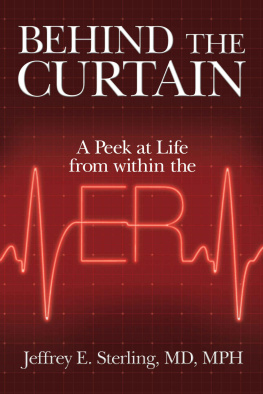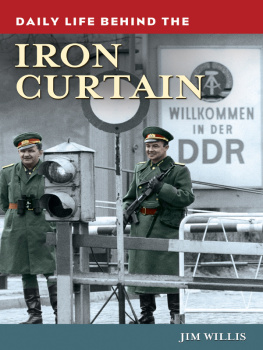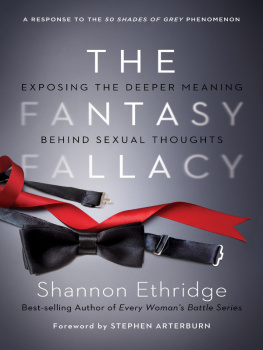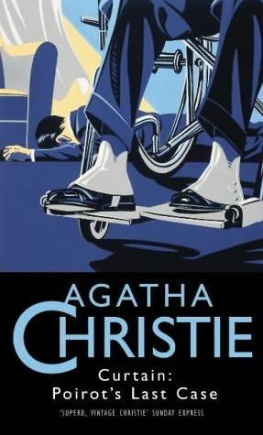Introduction
I have spent over twenty years as an emergency physician. I trained at one of the finest facilities in the country, the legendary Cook County Hospital in Chicago. I have served as head of nearly a dozen different emergency rooms (ERs) in six different states in virtually every societal setting, and I have overseen over twenty different ERs in varying leadership capacities. If I havent seen it all, its only because new diseases are being created.
The activities within emergency departments are mirrors to the real world and can also be viewed as societys truth serum. I am so glad my college major was in psychology and not in something like biology or chemistry. I have spent so much time dealing with the nuances and particulars of human behavior that I should have an honorary doctorate in psychology.
What happens behind the curtain is real. Often its not the parts of society that are presented publicly for consumption. In the ER, physicians walk into a room and immediately get exposed to things that one would otherwise get arrested for seeing (at least without permission) and things that most normal people would shriek in horror from seeing. People are so desirous of help that they reveal it all and talk so honestly that police could only dream of getting such willing cooperation during their interrogations. Now, that doesnt always happen upfront, but the skilled emergency physician can most always get the story. Its a nice by-product of physiology that even if and when the patient is not truthful, his or her physical signs and symptoms also tell a story that, if youre paying attention, either does or doesnt support whats being said.
The emergency department team has to guard against becoming cynical, detached, and dehumanized by it all. The constant onslaught of human pain, suffering, and misery is a bit much to handle. The cynical emergency physician forgets that Mr. Jones exists and refers to him as the drunk in Room Five. Even if one isnt cynical, he or she must learn to balance some hard truths. Many people often show up in an ER as victims of the consequences of their own actions:
- We eat too much.
- We drink and abuse drugs too much.
- We have inappropriate, unsafe sex too much.
- We beat up on each other too much, both physically and mentally.
- Were reckless in our handling of automobiles, guns, and other machinery.
- Worst of all, we dont engage in health prevention and present to the ERthe most expensive portal of entry to the healthcare systemonly when a medical emergency has befallen us.
Behind the Curtain is a set of memorable stories and experiences that are rough approximations and conglomerates of over seventy-five thousand patients I have seen over the years. I hope they not only entertain you but also provide a peek into the experiences of both patients and healthcare providers. Who knows? Maybe youre not alone in what you feel or what youve done! Thanks to all my wonderful nurses, patients, and colleagues for providing me a journey worth sharing.
The Drop Top Shaved Top
Its my job to treat, not to judge, but sometimes its very difficult because the emergency physician understands that risks are not just risks but instances of occurrences. In other words, if you introduce certain risks into your life, certain bad things are going to happen eventually.
There are certain things about driving that just arent up for debate anymore. Driving without a seat belt. Drinking, texting, and other distracted driving habits. Driving a motorcycle without a helmet. And then theres drag racing on streets.
I recall being young and very impressionable in medicine, spending time both in a coroners office and in emergency departments. I remember the fear, shock, awe, wonderment, and excitement associated with every single patient I saw in those early years, as my role in their care and my ability to occasionally make a difference became apparent to me. I also remember the bewilderment and frustration, not only from my inability to save certain individuals, but also from my inability to save certain individuals from themselves.
I will never forget the day a certain patient came in deceased from a motor vehicle crash (theyre not accidents). He had been drag racing another vehicle on a crowded street, and his car flipped 180 degrees, leaving it upside down. The problem in this case was the drop top portion of the vehicle was down. This gentleman came in with approximately three inches shaved evenly from the top of his scalp. Needless to say, he was dead on arrival. Looking back, given the speed of the car and the mechanism of injury, Im sure he died from a broken neck. Im surprised he wasnt decapitated.
Part of being an emergency physician is mastering the art of knowing when to act and when not to act. We are always being put upon to Dont just stand there. Do something! when, in fact, in many cases the correct mantra is Dont just do something! Stand there. Sometimes our actions interfere with the bodys own efforts to recover, and inaction will actually allow things to get better. In other instances, its honestly cruel to further assault someone who is dead and gone.
The surprising part about these particular injuries and deaths is that we too rarely take advantage of the lessons that are there to be learned. We appropriately spend time mourning the loss of the deceased but hesitate to speak ill of any of the habits that caused the preventable and premature death. I would respectfully suggest that a more complete mourning of those who die this way would include an assessment of lessons learned from their lives and how those of us who remain stand to benefit from how they livedand how they died.
Focusing on the Trauma, Not the Drama: A Stab Wound to the Eye
One of the most important skills of the emergency physician is the ability to stay out of the moment. Its critical to stay above the fray and focus on the academics of the case. Otherwise, its way too easy for the drama of the emergency room to resemble something out of a bad TV reality show or horror movie. That said, some presentations challenge and defy our best efforts.
Working in the ER on a weekend is challenging. Working in the ER overnight is unpredictable. Working in the ER in the summer means trauma. When you put all three together, all bets are off.
I vividly remember the feeling and the shift. While working in a small community hospital, on hour sixteen of a twenty-four-hour shift, I nervously laid my head down in anticipation of possibly getting a brief reprieve from the Chinese water torture flow of patients and being rewarded with a brief nap. Then the call came, seemingly as soon as my head hit the pillow. Trauma One... Trauma One. OK, so this is routine, right? Nope. The nurses are banging on my door. That never happens. Nurses are great at letting you know when something is really going on.
Up I jump, and I immediately hear screaming. ERs are always loud, but this was a level of panic. At this point, Im running to the trauma room (which never happens) and Im watching a man faced with a decision no one should ever have to make. He has a knife through the top of his eye. His ongoing decision was whether to leave it in or snatch it out.
This is where the academic has to come out of the emergency physician. Im not watching a horror movie. The concern is not a knife in the eye. The potential concern is called a perforated globe , and thats what management of the patient needs to be reduced to. Its always about the life threat first, then the limb threat, then everything else. In the midst of all the noise and drama, I think...
All trauma is the same at the beginning. Dont focus on the drama. Treat the patient with trauma. This means I need to make sure nothing has occurred thats even more important than a potential knife to the eye. OK... His airway is intact. Check. Hes breathing OK. Check. His blood pressure is normal. Check. Thats right. Even if theres a knife hanging out of your eye, it might not be the most important thing happening to you.
Next page


![Stephan Orth - Behind Putin's Curtain: Friendships and Misadventures Inside Russia [aka Couchsurfing in Russia]](/uploads/posts/book/860709/thumbs/stephan-orth-behind-putin-s-curtain-friendships.jpg)








